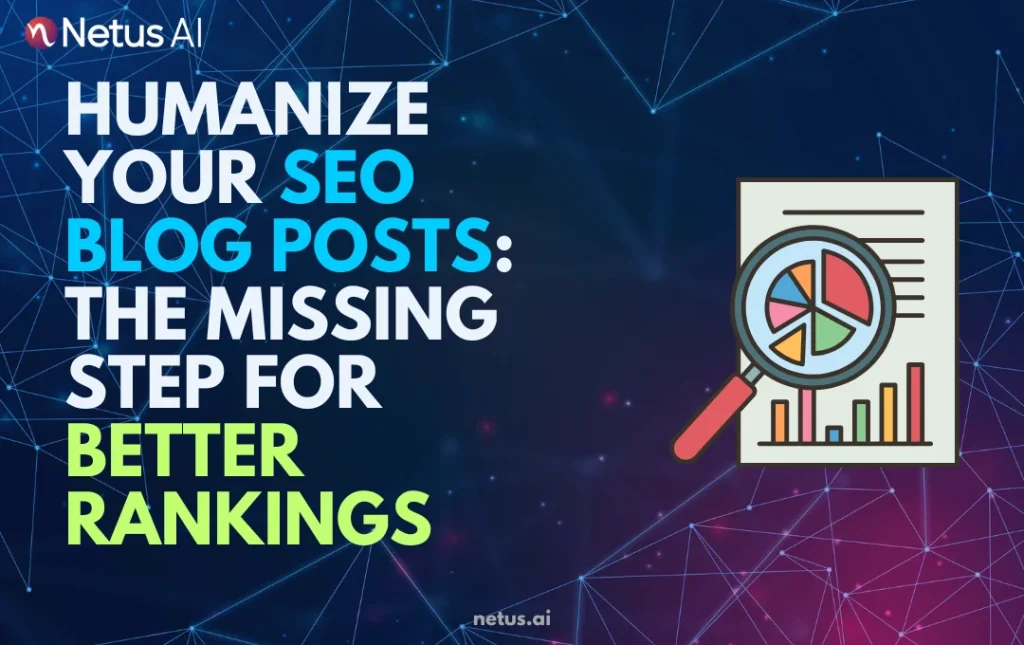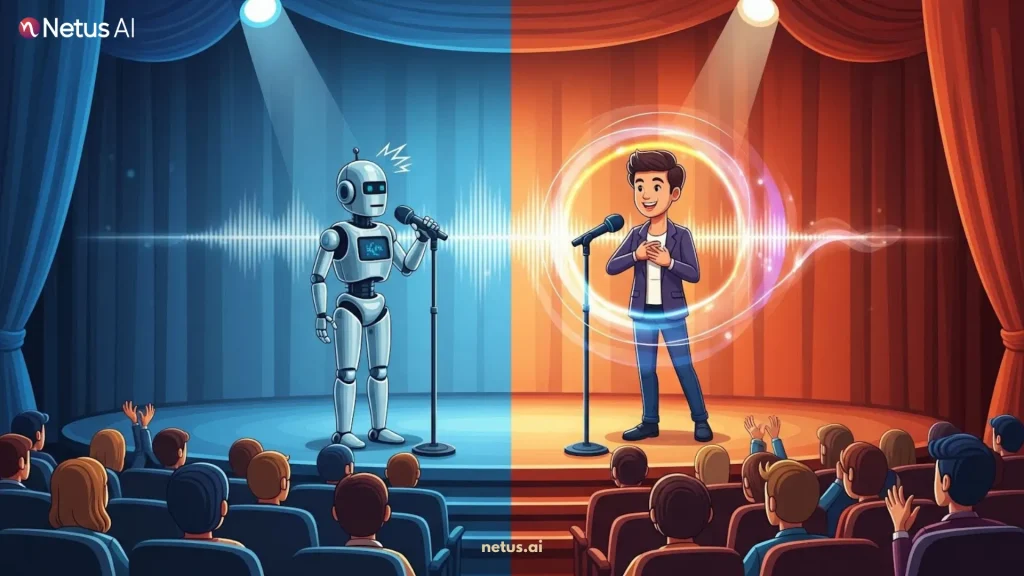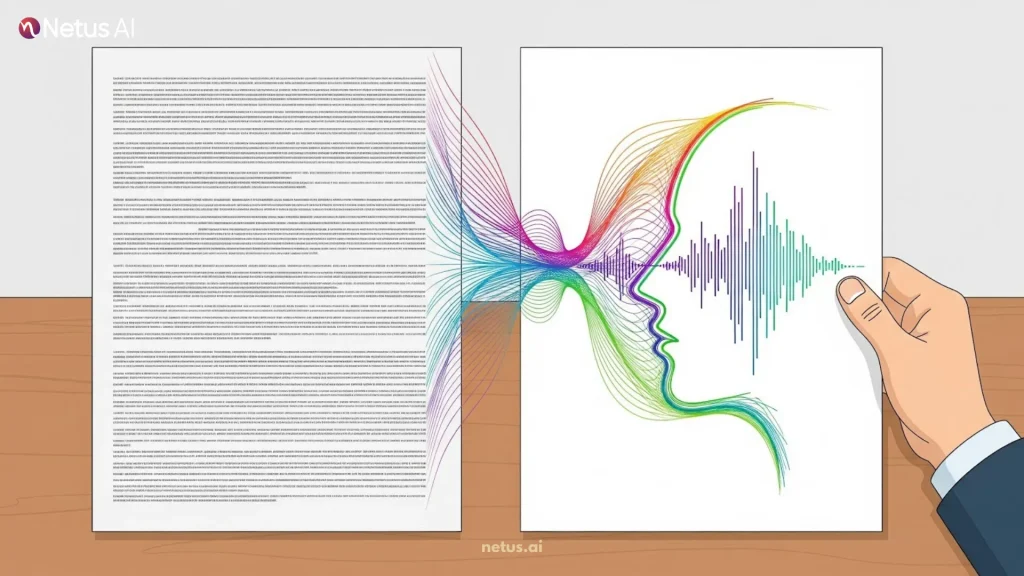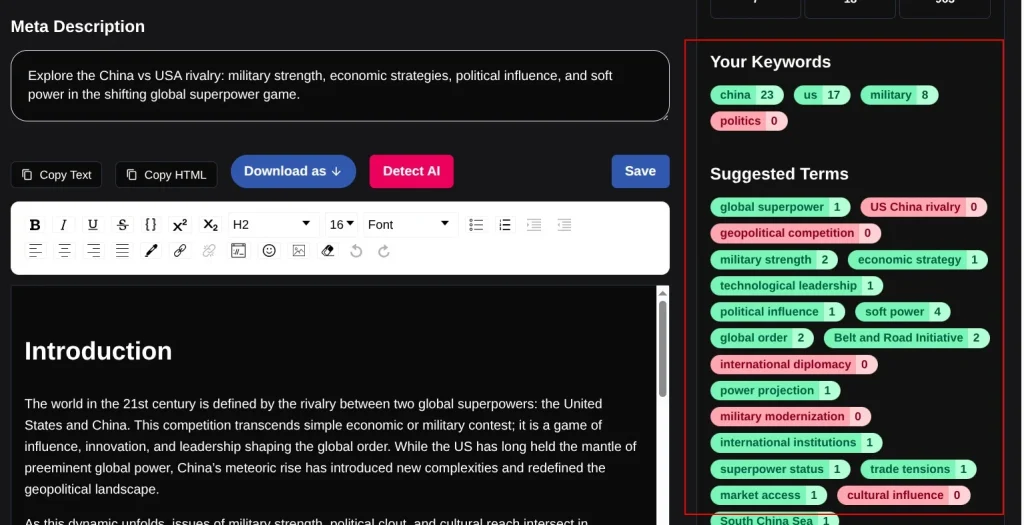Humanize Your SEO Blog Posts: The Missing Step for Better Rankings

You’ve done everything by the book. Your keyword research is impeccable. Your meta descriptions are compelling. Your site speed is blazing fast and your internal linking is a work of art. You’ve used AI to draft what looks like a perfect article, yet it stubbornly lingers on page two or worse, it gets a trickle of traffic that vanishes almost instantly. Frustrating, isn’t it? You’re likely facing a modern SEO dilemma where technical perfection meets a qualitative wall. The missing piece, the critical factor separating good content from great and ranking content from invisible content, isn’t found in a plugin or a strategy sheet. It’s found in mirroring the one thing algorithms are desperately seeking: humanity. Humanizing your SEO content is no longer a soft skill; it’s the sharpest competitive advantage you have for SEO blog ranking.
For years, we treated SEO as a technical puzzle. We solved for metrics and Google rewarded us. But the landscape has undergone a seismic shift. Google’s algorithms are no longer just counting keywords; they’re learning to read like people. They’re being trained to recognize and reward the nuance, the expertise and the authentic voice that signifies a real human expert behind the words. This is the core of the Helpful Content Update and the EEAT framework (Experience, Expertise, Authoritativeness, Trustworthiness). A technically perfect but emotionally sterile article generated by AI fails this test. It might be correct, but it isn’t convincing. It doesn’t build trust. And without trust, Google is increasingly reluctant to offer it a prime spot in its search results. The silent factor causing your blog’s underperformance isn’t a lack of SEO, it’s a surplus of artificiality.
The Overlooked SEO Ranking Factor: The Sound of a Human Voice

We’ve spent a decade optimizing for machines. It’s time to optimize for people again. Technical optimization, the crawlability, the speed, the keyword placement, is your ticket to the dance floor. But it won’t make you the star of the show. That honor is reserved for content that connects, engages and provides a genuine sense of value that readers can feel. Technical optimization gets you seen; humanization gets you chosen. Google’s entire trajectory, especially with its recent updates, points toward a sophisticated understanding of quality that transcends simple binary checks. Their systems are increasingly adept at analyzing user behavior, dwell time, bounce rate, pogo-sticking and interpreting what those signals mean. A page that is technically perfect but causes visitors to hit the back button in five seconds sends a powerful negative signal: “This did not satisfy the searcher.” Why? Often, because the tone is off. It’s robotic, generic and fails to answer the deeper, emotional question behind the query. Someone searching for “best practices for managing remote teams” isn’t just looking for a list; they’re looking for reassurance, practical wisdom from someone who’s been there and a sense that they’re not alone in the struggle. A listicle generated by AI can provide the list. Only a humanized piece of content can provide the rest.
This focus on humanizing SEO content is the logical evolution of EEAT. How does Google infer Experience? Through personal anecdotes and unique insights that can’t be scraped from the web. How does it gauge Expertise? Through the depth of analysis and the confident, nuanced handling of a topic. How does it establish trust? Through a consistent, authentic voice that doesn’t feel like it’s trying to game the system. Your blog’s tone is not a superficial layer of polish; it is the primary carrier signal for EEAT. Ignoring it is like building a beautiful, code-perfect website and forgetting to connect it to the internet. You’ve done the hard work, but no one can benefit from it because the final, crucial connection, the human connection, is missing.
The High Cost of Robotic Tone: When Your Content Feels Fake

So, what actually happens when you publish content that lacks that essential human touch? The consequences are immediate, measurable and damaging to your SEO blog ranking. The first and most brutal reaction comes from your audience. Readers are intuitively sophisticated; they may not know what EEAT stands for, but they know when they’re being talked at by a machine versus being talked to by a person. This triggers a cascade of negative user signals.
You’ll see high bounce rates as visitors arrive and immediately sense the content is generic, failing to offer the unique perspective they craved. You’ll see dismal dwell times as they quickly scan, fail to find a compelling narrative or voice and leave. These behavioral metrics are not just vanity numbers; they are direct feedback to Google’s algorithm. The algorithm interprets this mass exodus as a clear verdict: “This page does not satisfy search intent.” In response, it will begin to demote the page, softly at first and then more severely. This often manifests in the most frustrating status of all in Google Search Console: “Crawled – currently not indexed.” This is Google’s way of saying, “We see your page, but we’ve decided it’s not good enough to include in our index for most queries.” It’s a soft de-ranking, a purgatory for content that fails to meet quality thresholds.
This judgment isn’t arbitrary. It’s often delivered with the help of AI detection SEO principles. While Google doesn’t use public detectors like ZeroGPT, its systems are trained on similar principles of stylometry, the statistical analysis of writing style. These systems flag content that exhibits patterns statistically common to AI, such as:
- Uniform Sentence Structure: A predictable, metronomic rhythm of similar-length sentences.
- Generic Word Choice: An over-reliance on common vocabulary and a lack of creative or specific terminology.
- Perfect, Yet Empty, Transitions: Using phrases like “furthermore,” “in addition,” and “it is important to note” with robotic regularity.
- Emotional Flatlining: A complete absence of subjective perspective, passion or controlled frustration.
When your content gets AI content flagged by these stylistic patterns, it’s not just a detection failure; it’s a failure to demonstrate the EEAT that Google requires. The robotic tone is the symptom; the lack of depth and expertise is the disease. The penalty is the cure Google applies to protect its search quality.
The Art of the Human Touch: Transforming Output into Voice

Understanding the problem is only half the battle. The solution is learning to actively humanize AI writing and bridge the gap between sterile output and compelling content. The goal isn’t to trick detectors but to genuinely write like a human for an audience of humans. The difference isn’t subtle; it’s the difference between a dictionary definition and a conversation with an expert.
Let’s break down the tangible differences. Robotic phrasing sounds like this: “Utilizing the appropriate methodologies for lead generation is imperative for business growth. Furthermore, it is advantageous to leverage data analytics to optimize conversion rates.” It’s not wrong. It’s just dead. A humanized version would read: “Forget casting a wide net and hoping for the best. Generating real leads is about targeted, smart outreach. And the secret sauce? Your data. Diving into your analytics isn’t just a good idea, it’s the only way to see what’s actually working and double down on it.” The second version uses contraction (“it’s”), direct address (“you”), more evocative language (“secret sauce,” “double down”) and a conversational rhythm. It has a voice.
This transformation hinges on a few key practices:
- Orchestrate Sentence Rhythm: Humans write with cadence. We use short, punchy sentences for impact. We use longer, more complex sentences to build out a thought. Read your work aloud. If it sounds monotonous, break up long sentences and combine short, choppy ones. Varied rhythm is a hallmark of human cognition.
- Inject Emotional Tone: Write with a point of view. Are you excited about this tip? Skeptical of that outdated practice? Let that feeling seep into the language. Use words that convey conviction (“crucial,” “game-changing”), caution (“be wary of,” “a common pitfall”) or enthusiasm (“I love this strategy because”). Emotion builds relatability and trust.
- Embrace the Imperfect: Humans use rhetorical questions. We tell short, relevant stories. We make occasional, humorous asides. We use idioms. These “imperfections” are the fingerprints of humanity that AI cannot easily replicate. A personal anecdote about a client’s success or a failure you learned from is worth a thousand words of generic advice. It is a pure, undeniable Experience.
This is why even “clean” AI output that seems fluent still gets flagged. It lacks this layer of conscious imperfection and emotional texture. It can mimic the form of an article but not the soul of one. SEO content rewriting, therefore, is not just about swapping synonyms. It’s about surgical editing for humanity. It’s about adding that missing layer of yourself, your expertise, your personality, your unique perspective. This process of AI blog fix is what transforms a generic draft into a powerful asset that stands out, connects with readers and finally, earns the rankings your technical SEO has already set the stage for. The tools exist not to replace this process, but to facilitate it, allowing you to scale your voice, not lose it.
Content Starts at Generation: NetusAI’s SEO Article Writer and Content Generator

Avoiding stylometry and detection issues shouldn’t begin after content is written, it should start with the writing itself. That’s where NetusAI steps in.
Unlike generic AI tools that churn out robotic, easily flagged paragraphs, The NetusAI SEO Article Generator is designed to help you create full-length blog posts that are already optimized for clarity, tone and search intent. Unlike generic tools, it goes beyond simple drafting. It:
- Lets you input headlines and targeted SEO keywords
- Supports long-form templates for full blogs
- Auto-generates a structure with Title → Outline → Content
- Works in multiple languages for global teams
And most importantly: it ties directly into the Netus AI Bypasser + Detector system, meaning your output isn’t just readable, it’s already tuned to avoid detection.
You can generate, review and rewrite all in one interface without needing third-party tools to patch the gaps. It’s built for marketers, freelancers and bloggers who want their AI content to actually pass as human-written.
Final Thoughts
Writing for SEO means more than just keyword targeting and meta tags, it means writing for people first.
Google’s algorithms now prioritize quality, tone and clarity. That’s why humanizing your AI-generated blog content is the missing step that unlocks better rankings, stronger engagement and long-term search visibility.
Tools like NetusAI don’t just rewrite content, they elevate it. With built-in AI detection, paraphrasing and bypassing engines, Netus lets SEO writers confidently pass detection tests, preserve meaning and keep content optimized for both humans and search engines.
Don’t settle for “technically correct” AI writing. Make it human and watch your rankings climb.
FAQs
Because AI-generated content often lacks natural tone, emotional cues and variety, all of which Google associates with quality. Humanizing helps your content pass AI detection and perform better in SEO.
Repetitive sentence structure, lack of contractions, flat tone and generic phrasing are common giveaways. If your content feels like it was written by a machine, it likely will be flagged as such.
Not directly. But it does penalize low-quality content and most raw AI text falls into that category unless it’s refined. Humanizing it helps you avoid soft penalties like “crawled, not indexed.”
Not effectively. Most paraphrasers only change wording. Tools like NetusAI actually restructure content, shift tone and optimize flow, making it sound genuinely human while passing AI detection tests.
Netus combines paraphrasing, rewriting and real-time detection into one tool. It helps writers fix robotic tone, evade detection and structure content in a way that’s both SEO-optimized and human-readable.
Long-form blogs, SEO guides, product reviews and any content targeting organic traffic. These formats need clarity, personality and flow, not just keyword inclusion.
Not at all. In fact, it improves SEO by increasing engagement metrics, reducing bounce rates and aligning with Google’s helpful content guidelines.
Yes, but only with smart editing or tools like NetusAI that simulate human tone. Always review the final draft yourself to ensure it reflects your brand and message.



